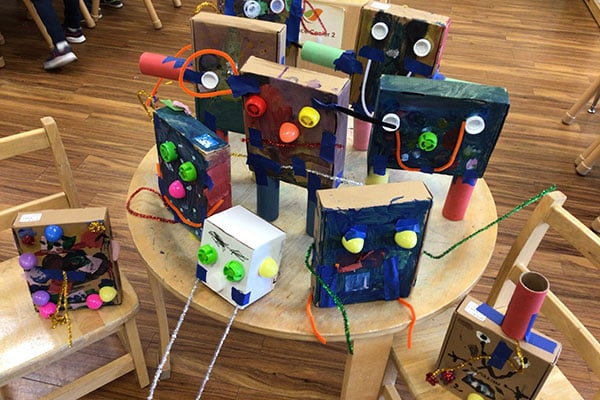
Reggio Emilia’s approach to early childhood education and development allows young children to learn through exploration, while developing confidence in who they are and the world around them.
How Reggio Emilia came to be
It was Loris Malaguzzi (1920-1994) who became the inspiration behind the early childhood education and development experiences in Reggio Emilia. Malaguzzi was a primary school teacher who later went on to study psychology and brought to his lifetime work in education, his interests and experience in theatre, journalism, sport and politics. He is remembered by his colleagues as a very strong character but highly collaborative. Malaguzzi described himself as stubborn, with an iron will. He wanted to win and to carry along with himself everyone who thought like himself, better than himself or differently from himself. As a result, Malaguzzi worked tirelessly with colleagues in Reggio to further his understanding of how children learn, and to publicize his passionate belief in his image of the competent, confident child.
The first preschool in Reggio Emilia originated after Liberation Day in 1945. Reggio Emilia is a modern, dynamic city that combines economic prosperity with social and ecological responsibility. In the village of Villa Cella, close to Reggio, money was made available from the sale of a tank, a few horses and a truck abandoned by the retreating Nazis. The men of the village suggested building a theatre but the women wanted to build a preschool to provide a new form of early childhood education that would ensure that they would never bring up a generation of children who would tolerate injustice and inequality.
The earliest preschools were built by local families and communities in a period of adversity and hardship. Over the next 40 years a network of preschools and infant-toddler centres developed.
Up until the 1970s, in Italy, preschools had been the responsibility of the Catholic Church and now more parents were demanding secular education for their children. In 1970, the first infant-toddler centre for children aged three months to three years was opened in response to the demands of working mothers. The centres became providers of early childhood education in environments that were appropriate to the child’s level of development in order to overcome resistance of the Church and the fear that these centres would lead to the breakdown of the family.
Political opposition remained until 1976 when preschools were opened up to public scrutiny. The parents and the community confirmed their support for the guiding principles of the Reggio Approach to early childhood education and development, creating a strong relationship between the preschools and the community.
Over time, Malaguzzi and other educators in Reggio gathered their ideas and opinions from many sources. In developing their approach they sought information from theories and philosophies of education, most notably the work of Montessori.
Fundamental to the Reggio philosophy is the image of the child as ‘rich in potential, strong, powerful and competent.’ The child is recognized as having his or her own values, who wants to be respected and valued for himself as well as holding respect for others and who embodies a curiosity and open-mindedness to all that is possible. Children are encouraged to develop their own theories about the world and how it works through exploration.
Crucial features of this early childhood education and development approach include:
– Active involvement from parents in the development and management of early childhood services.
– Contributions from parents towards the cost of their child’s education depending on their income level.
– All children are catered for – those with disabilities are considered to have ‘special rights’ rather than ‘special needs’.
– Teachers are viewed as enthusiastic learners and researchers and not as imparters of knowledge.
– Each group of children has two teachers who remain with them throughout their time at school.
– The role of the aterlierista – a practising artist who supports the development of children’s learning, creativity and imagination – is central to the Reggio approach.
In 1980 international interest in this approach gained momentum with exhibitions throughout Europe. In 1991, the American magazine Newsweek named the Diana preschool as the most avant-garde early childhood institution in the world, leading to huge interest from the United States and the rest of the world.
After Malaguzzi’s unexpected death, the community of Reggio Emilia resolved to carry on and implement his dreams and fulfil the Reggio mission ‘to enhance the potential of all children’. A foundation named Reggio Children was established as the International Centre for the Defence and Promotion of the Rights and Potential of All Children.
“Stand aside for a while and leave room for learning, observe carefully, what children do, and then, if you have understood well, perhaps teaching will be different for you.”
~Loris Malaguzzi, Founder of the Reggio Emilia Approach
credit to https://www.baliadvertiser.biz/loris/







